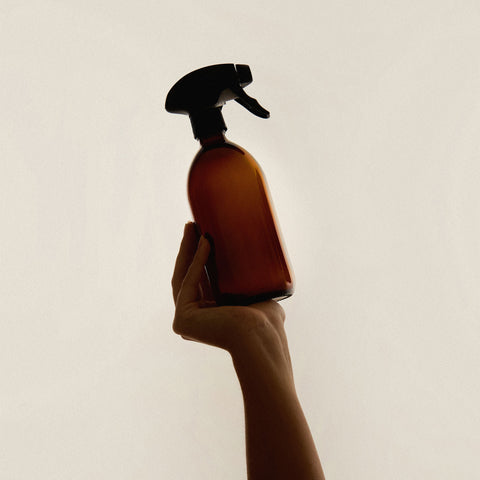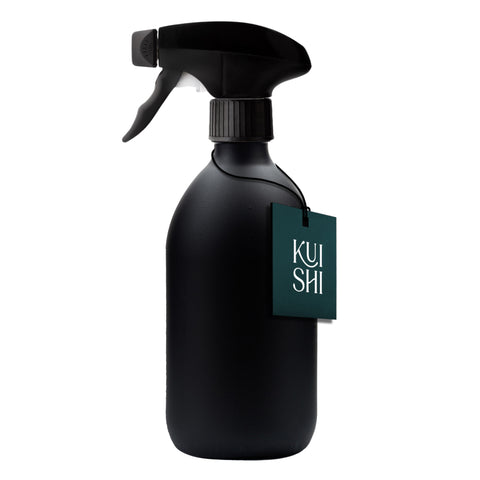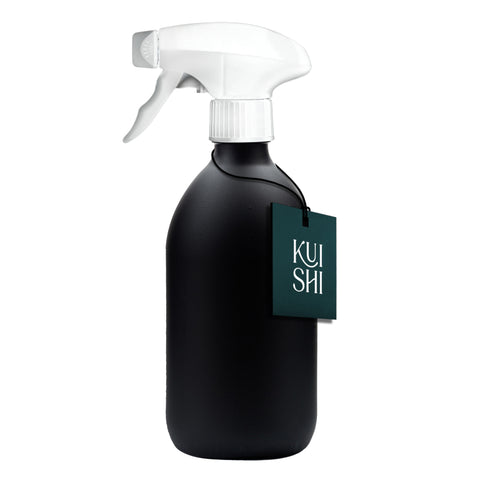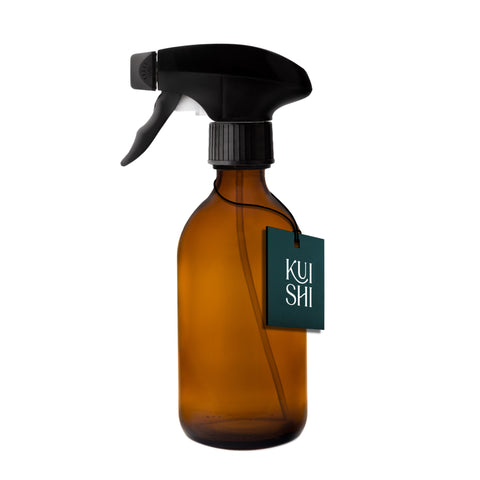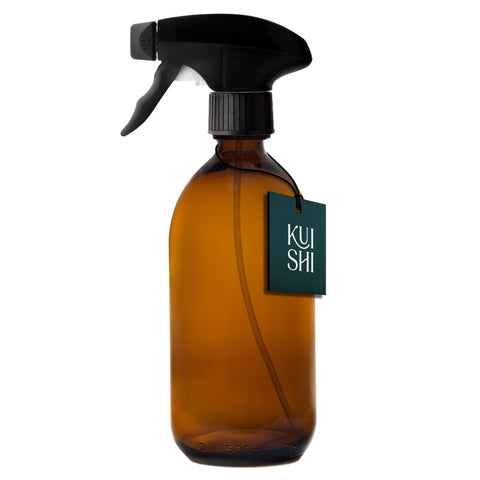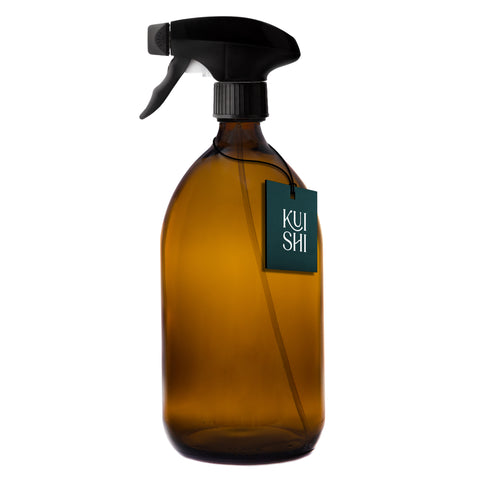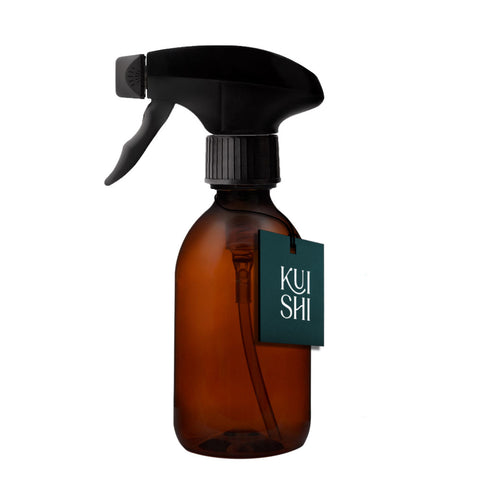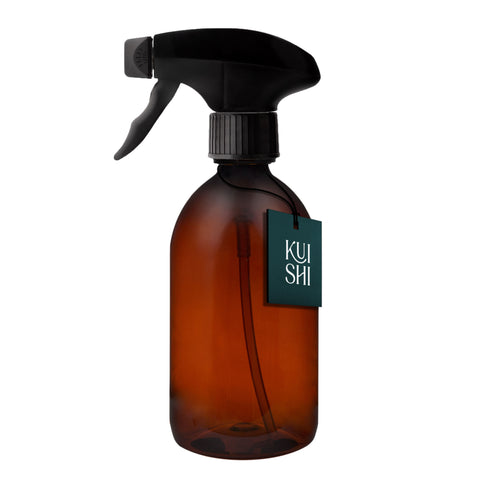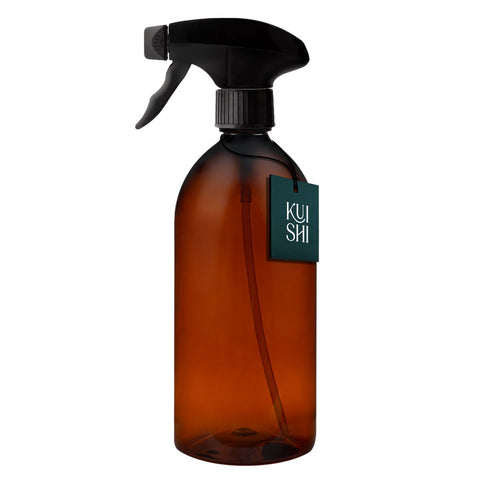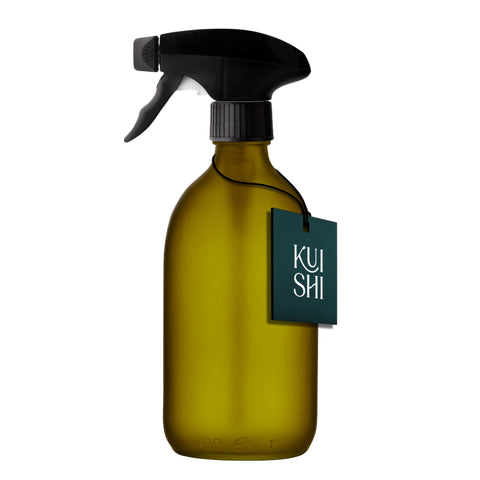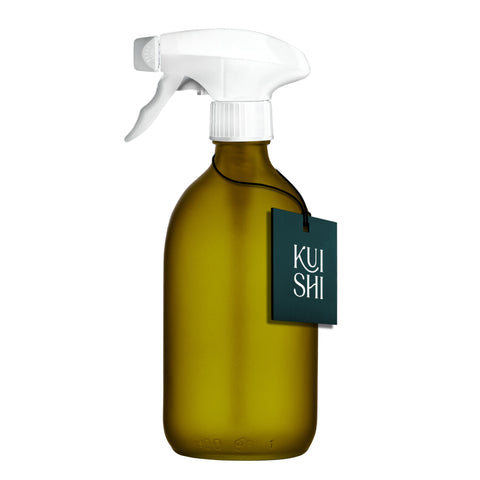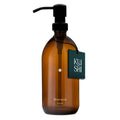There's something deeply satisfying about the morning ritual of tending to your houseplants.
The gentle press of a trigger, the fine mist settling on verdant leaves, the quiet moment of connection with living things that share your space. It's a mindfulness practice that spans the world and dates back centuries.
For many plant enthusiasts, misting has become an essential part of this practice—a way to nurture tropical species and recreate the humid environments they come from.
But here's the question: Does misting truly benefit your plants, or have we been perpetuating a beautiful botanical myth?
Recent scientific research has challenged long-held beliefs about misting, revealing a more nuanced reality. Let's explore the science, the genuine benefits, and the mindful approach to misting that honours both your plants and the truth.
Inside this Article:
- The Truth About Misting and Humidity
- What Misting Actually Does (And Why You Might Still Want To Do It)
- Understanding Stomata: How Your Plants Actually Breathe
- Which Plants Appreciate Misting (And Which Ones Don't)
- How to Mist Mindfully In Your Home
- Better Ways to Increase Humidity
- The Risks of Over-Misting
- Mist with Purpose, Not Just Habit
The Truth About Misting and Humidity
For decades, plant care wisdom has insisted that misting raises humidity levels around houseplants, particularly tropical species that evolved in rainforests where humidity hovers around 88%.
Your average home, by contrast, maintains humidity between 30% and 40%—a significant difference that seems to demand intervention, especially when good humidity should sit around the 55 - 60% mark.
However, Dr. Stu Farrimond's research in The Science of Gardening presents a sobering reality: the humidity boost from misting is remarkably short-lived.
Water droplets settle on your leaves and gradually evaporate, briefly increasing humidity before the moisture disperses into your surrounding room.
On dry winter days, this effect may last only 10 to 15 minutes, meaning you'd need hourly spraying to create any meaningful impact.
The RHS's chief horticulturalist Guy Barter confirms this: "When you mist a plant, the water vapour produced has a highly transient effect on humidity. Any water applied will swiftly evaporate, disperse as vapour and have limited effect."
But before you toss that mister in frustration, consider this: most houseplants adapt remarkably well to typical home humidity levels.
Those brown leaf tips and crispy edges you've been blaming on low humidity? They might actually result from other causes—inconsistent watering, salt build-up from fertilisers, or chlorine in tap water.
UK homes generally maintain 40% to 50% relative humidity in most rooms, which actually falls within the acceptable range for tropical houseplants.
The takeaway: Misting can provide temporary relief during particularly dry winter days when your heating system is running, but it's not the humidity hero we once believed it to be.
What Misting Actually Does (And Why You Might Still Want To Do It)
 While misting won't transform your living room into a rainforest, it does serve several valuable purposes when you apply it thoughtfully.
While misting won't transform your living room into a rainforest, it does serve several valuable purposes when you apply it thoughtfully.
Keeps Your Leaves Clean and Light-Absorbing
Perhaps misting's most practical benefit is keeping your leaves clean.
Over time, dust settles on leaf surfaces, creating a barrier that reduces light absorption necessary for photosynthesis. Regular misting—ideally monthly—combined with gently wiping leaves with a clean microfibre cloth, keeps foliage pristine and functioning optimally.
This simple maintenance allows your plants to harness light more effectively, supporting healthier growth.
Helps Manage Pests
Light, regular misting can help deter spider mites, one of the most common houseplant pests. These tiny arachnids prefer dry conditions and can be discouraged by consistent moisture.
Additionally, your mister provides an effective delivery method for applying pest treatments to infested plants, allowing you to target affected areas with precision.
However, there's a catch: water droplets can also spread pests and pathogens from leaf to leaf or plant to plant. This is why technique matters.
Keeps Moss Poles Moist for Climbing Plants
For climbing plants like Rhaphidophora, Monstera, and Philodendron that naturally grow up trees in their native habitats, moss poles provide essential support. These plants develop aerial roots that attach to the moist moss, mimicking their natural growth pattern.
The problem? Sphagnum moss exposed to air dries within hours—sometimes even faster in heated homes.
Daily misting keeps moss poles adequately moist for aerial root attachment without the hassle of repeatedly carrying entire plants to your sink. The fine water droplets can be directed precisely to the moss without saturating surrounding surfaces.
This is probably the most compelling daily use case for misting.
Helps Stubborn Leaves Unfurl
New leaves occasionally struggle to unfurl properly, developing kinks or remaining partially stuck as they emerge. This happens even in environments with adequate humidity.
Light spritzing of the unfurling leaf seems to help it slide out smoothly as it grows, particularly for species like Philodendron melanochrysum and various Alocasia varieties.
While the mechanism isn't entirely understood, many experienced plant keepers report success with this technique.
Provides Temporary Cooling
On particularly warm days, misting provides temporary cooling through evaporation. As water changes from liquid to vapour, it absorbs heat from the leaf surface, offering your plants brief respite from heat stress.
This benefit, whilst modest, can help protect plants during summer heatwaves or when positioned near warm windows.
Understanding Stomata: How Your Plants Actually Breathe

To appreciate why misting technique matters, let's talk about stomata—the microscopic pores that function as your plant's breathing apparatus.
These tiny openings, found primarily on the undersides of leaves, facilitate gas exchange: carbon dioxide enters for photosynthesis, whilst oxygen and water vapour exit.
Most plants open their stomata during early morning hours, typically between 7 and 9 a.m., reaching maximum openness near noon before gradually closing as the day progresses.
The concentration of stomata on leaf undersides serves an evolutionary purpose: it minimises water loss by positioning these openings away from direct sunlight and heat. This is why proper misting technique involves spraying both the tops and undersides of leaves—the undersides contain the majority of stomata.
However, let's be realistic: your plants primarily absorb water through their root systems, not their leaves. Whilst stomata can absorb some moisture from humid air, foliar absorption remains minimal compared to root uptake.
Misting benefits your plants more by cleaning surfaces and providing temporary environmental relief than by serving as a significant water source.
Which Plants Appreciate Misting (And Which Ones Don't)
Tropical species that evolved in humid environments generally tolerate misting well, though they don't strictly require it if you employ other humidity methods.
These include:
- Calathea
-
Maranta
-
Ferns
-
Philodendron
-
Monstera
-
Peace lily
-
Orchids
-
Palms
-
Pilea
Plants you should NOT mist:
Cacti and succulents evolved in arid environments and prefer dry conditions. Fiddle leaf fig (Ficus lyrata) similarly dislikes water on its leaves. Plants with fuzzy or hairy foliage—such as African violets and specific Begonia species—develop unsightly spots or fungal infections when water droplets linger on their textured surfaces.
And here's a critical one: Never mist plants displaying signs of bacterial or fungal infection.
Soft, dark brown spots on leaves or white, powdery residue that easily rubs off (powdery mildew) indicate problems that misting will only make worse. Water serves as a vector for pathogen spread, turning a localised issue into a systemic problem.
How to Mist Mindfully In Your Home

If you choose to mist, technique matters considerably.
Timing is essential. Mist during early morning hours when stomata naturally open, or in the evening after 5 p.m. Most importantly, ensure your leaves have adequate time to dry before nightfall. Water lingering on foliage overnight creates ideal conditions for fungal and bacterial growth.
Technique should be thorough yet gentle. Apply mist to both the tops and undersides of leaves, where stomata concentrate. Aim for a dewy appearance rather than dripping wetness. Excess water pooling on leaves or in crown areas invites rot and disease.
Water temperature should be room temperature or lukewarm—never hot or cold. If you wouldn't comfortably shower in it, your plants won't appreciate it either.
Water quality generally poses fewer concerns than many believe. Tap water contains beneficial minerals that support plant health. Dangerous chemicals and heavy metals are removed to human safety standards. Avoid softened water, which contains salt that harms plants. If your tap water leaves mineral deposits on leaves, consider filtered water, though this is typically unnecessary.
Tool quality influences results significantly. A quality mister produces fine, even droplets rather than heavy sprays.
Kuishi's amber glass spray bottles, crafted from up to 45% recycled glass, provide the ideal mist dispersion whilst honouring environmental responsibility. The ergonomic trigger design prevents hand fatigue during extended misting sessions, and glass construction ensures no chemicals leach into your water, as can occur with plastic alternatives.
Better Ways to Increase Humidity
 If your goal is genuinely raising ambient humidity—not simply enjoying the ritual of misting—more effective solutions exist.
If your goal is genuinely raising ambient humidity—not simply enjoying the ritual of misting—more effective solutions exist.
Humidifiers remain the most reliable method for maintaining consistent humidity between 40% and 60%. Unlike misting, which affects only the immediate leaf surface for minutes, humidifiers raise humidity throughout your entire room for extended periods.
Grouping plants together creates microclimates through collective transpiration. As plants release moisture through their leaves, neighbouring plants benefit from this shared humidity. This approach also creates attractive displays.
Strategic placement helps considerably. Position your humidity-loving plants away from heating vents and air conditioners, which rapidly dry the surrounding air.
Pebble trays, long recommended in plant care literature, have been largely debunked by recent research. The theory suggested that evaporation from water-filled trays would raise humidity at plant height. In reality, humid air disperses in all directions rather than rising vertically, meaning humidity at root and leaf level remains essentially unchanged.
The Risks of Over-Misting
Water sitting on leaves creates conditions favourable to fungal infections, identifiable by soft, dark brown spots. Bacterial pathogens spread readily through water, travelling from leaf to leaf or plant to plant during misting.
Powdery mildew—white, powdery residue on leaves and stems—thrives in high humidity with poor air circulation.
The solution lies in moderation and proper technique: ensure good air circulation around your plants, mist early enough for leaves to dry completely, and cease misting if any signs of infection appear.
Mist with Purpose, Not Just Habit
Perhaps we've been asking the wrong question all along. Rather than "Does misting increase humidity?" ask yourself, "What role does misting play in my plant care routine?"
When you reframe misting as a ritual of attention—a monthly practice for maintaining clean leaves, a daily practice for moss pole maintenance or helping stubborn leaves unfurl—it assumes its proper place in your care routine.
At Kuishi, we believe that using quality tools transforms routine maintenance into meaningful practice. Small acts of attention, repeated consistently, compound into healthy, thriving plants that bring beauty to your home.
Ready to elevate your plant care?
Discover our collection of sustainable glass spray bottles at kuishi.com—designed for those who tend their plants with intention and care.
A Gift for Plant Lovers
As our thanks for engaging with this guide, enjoy 15% off any Kuishi spray bottle. Use code MISTGUIDE at checkout.


